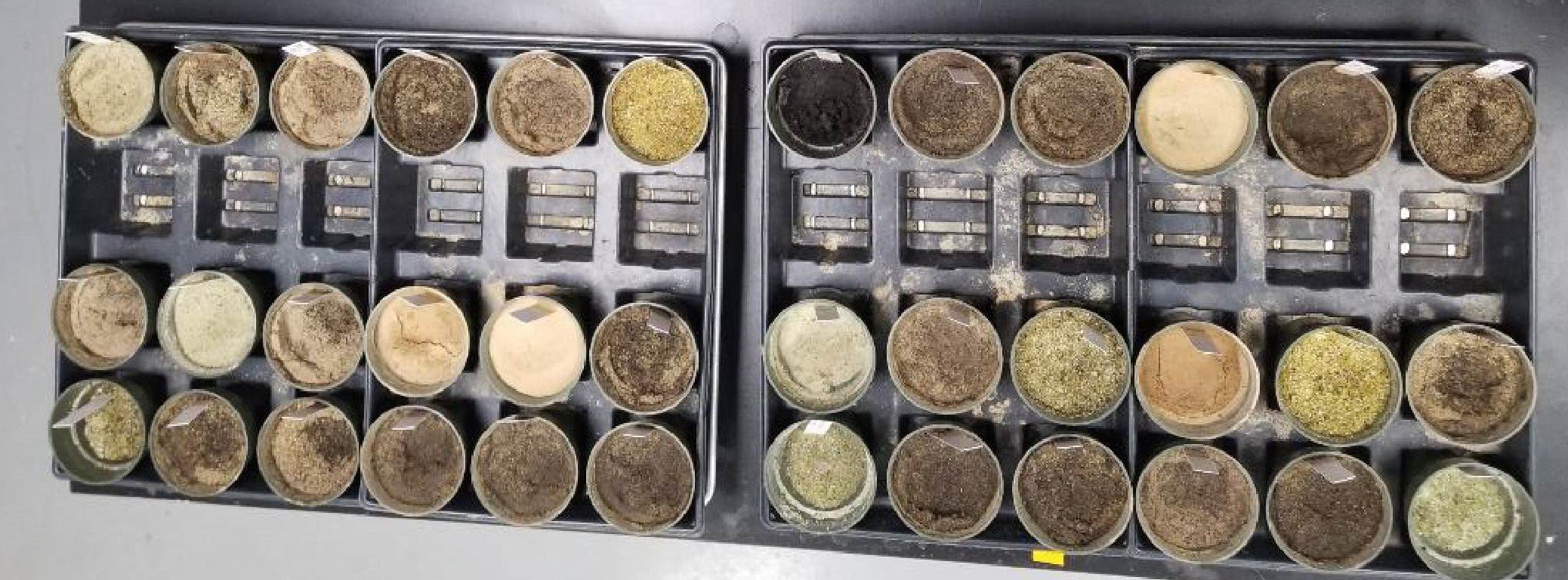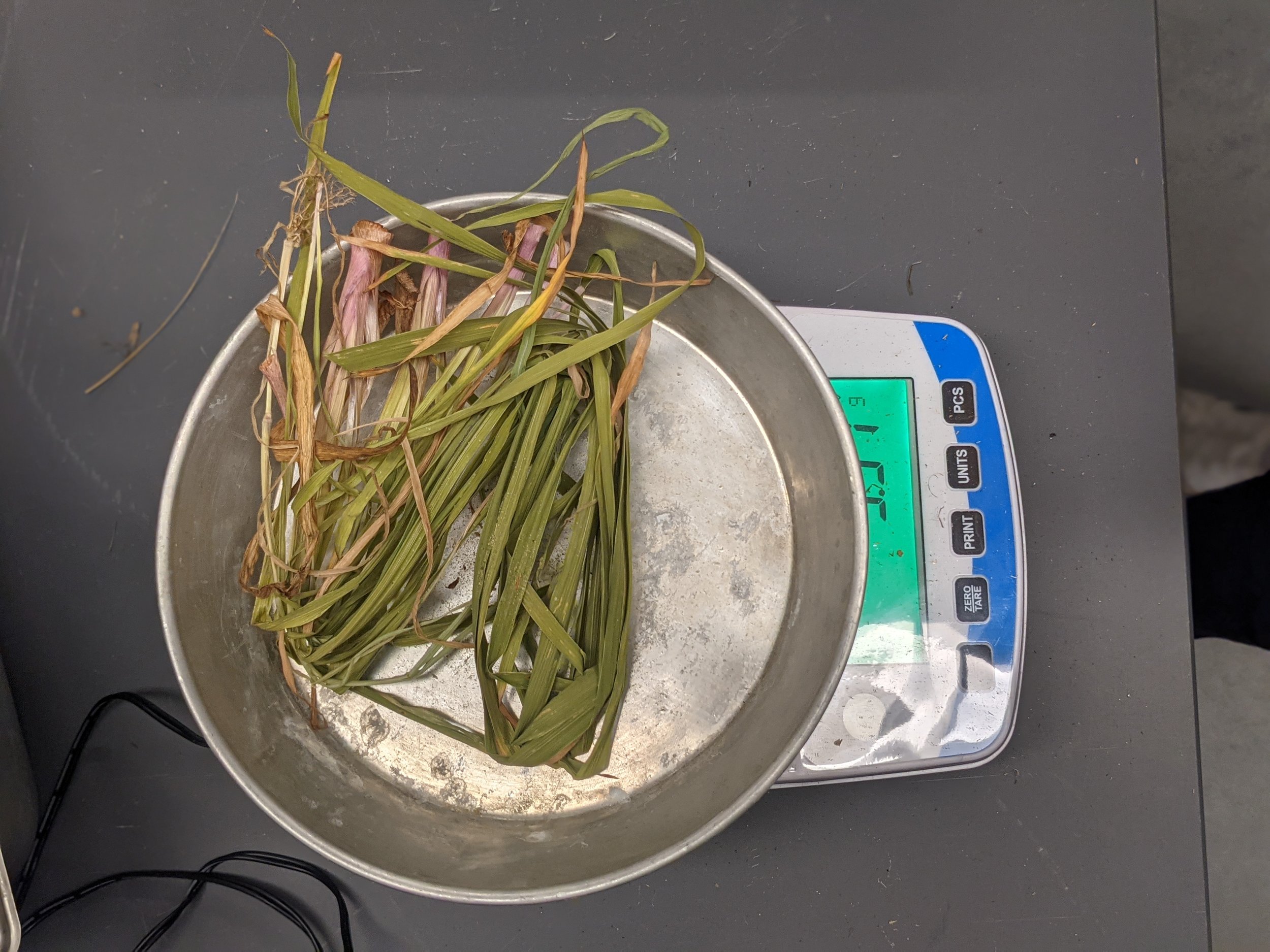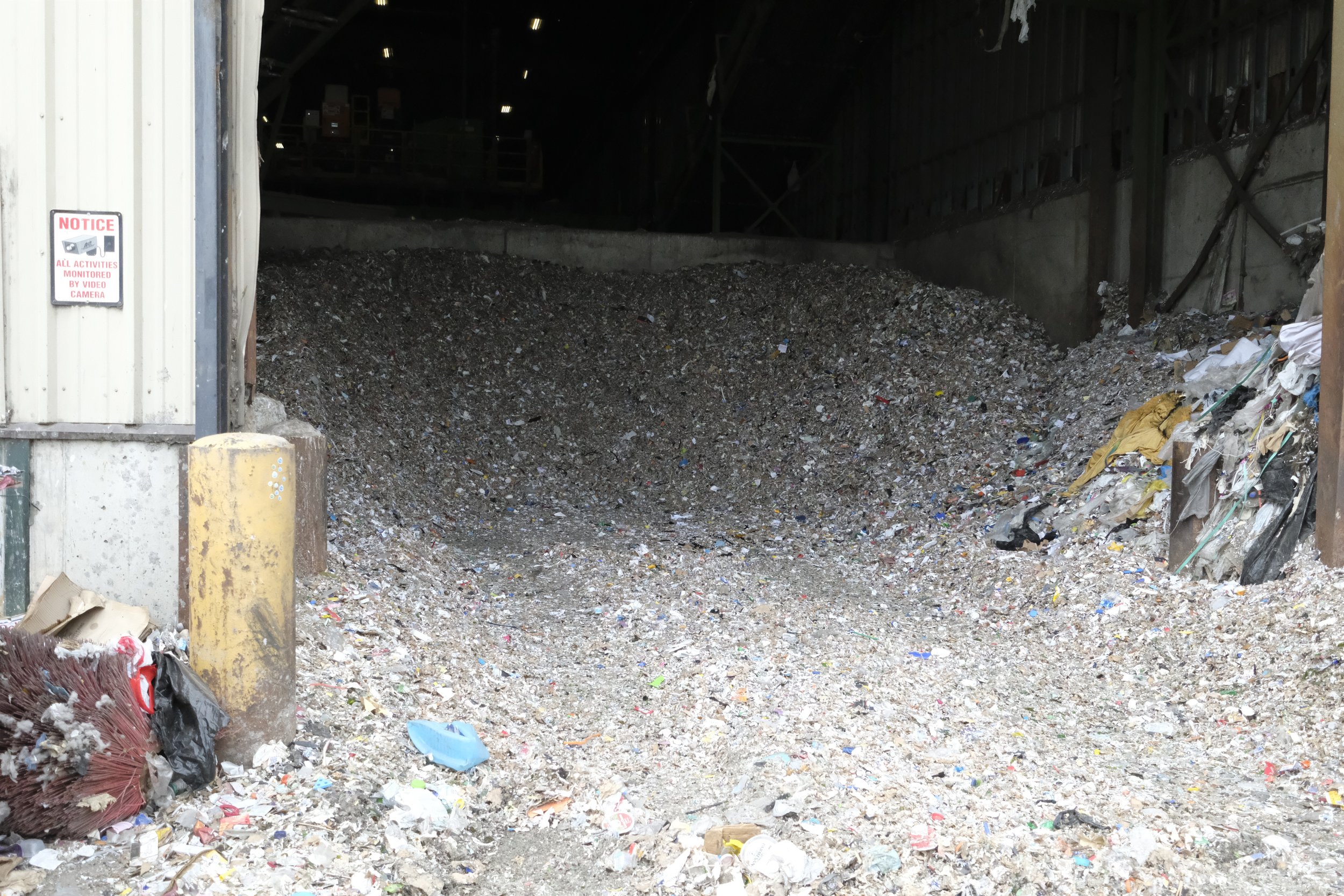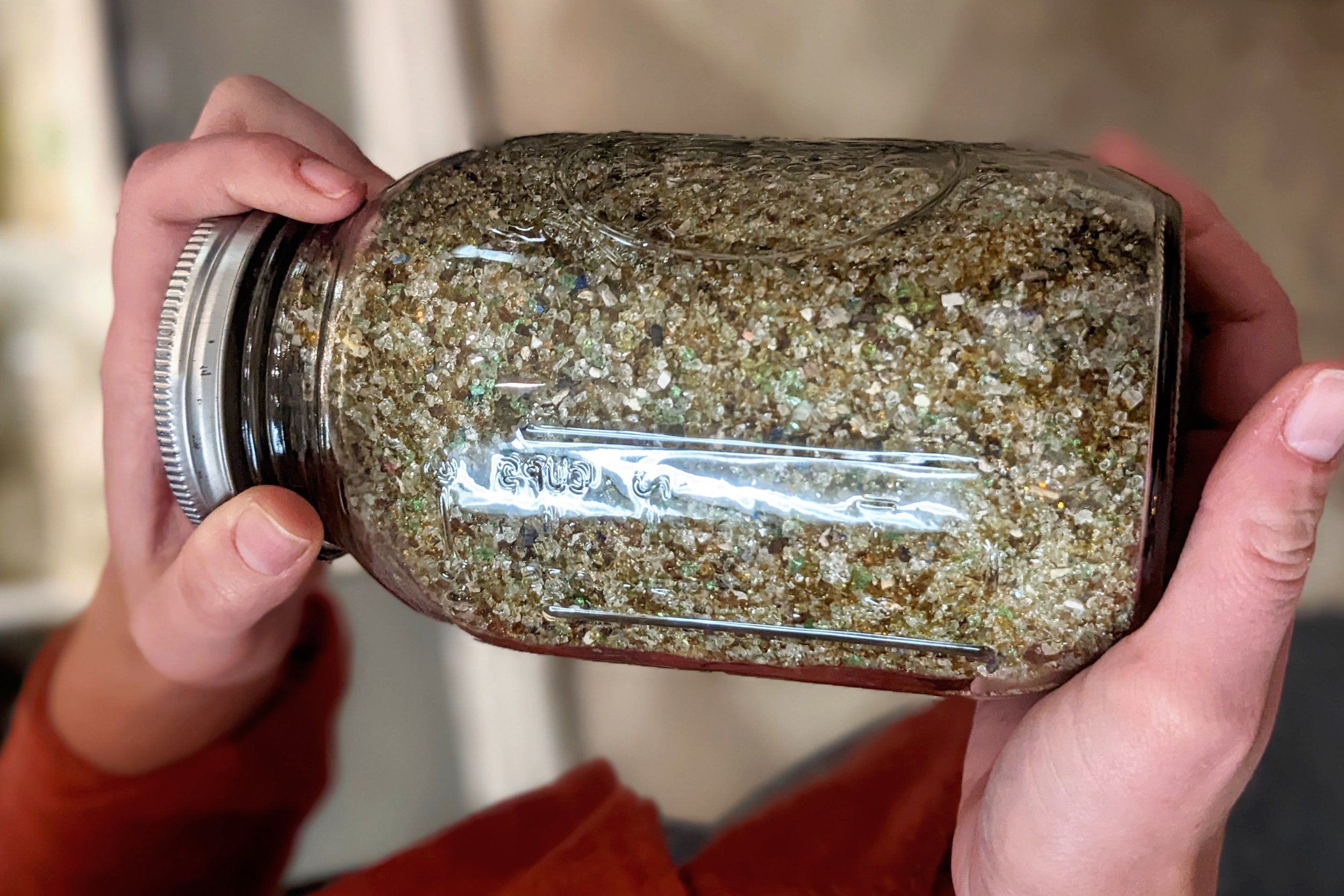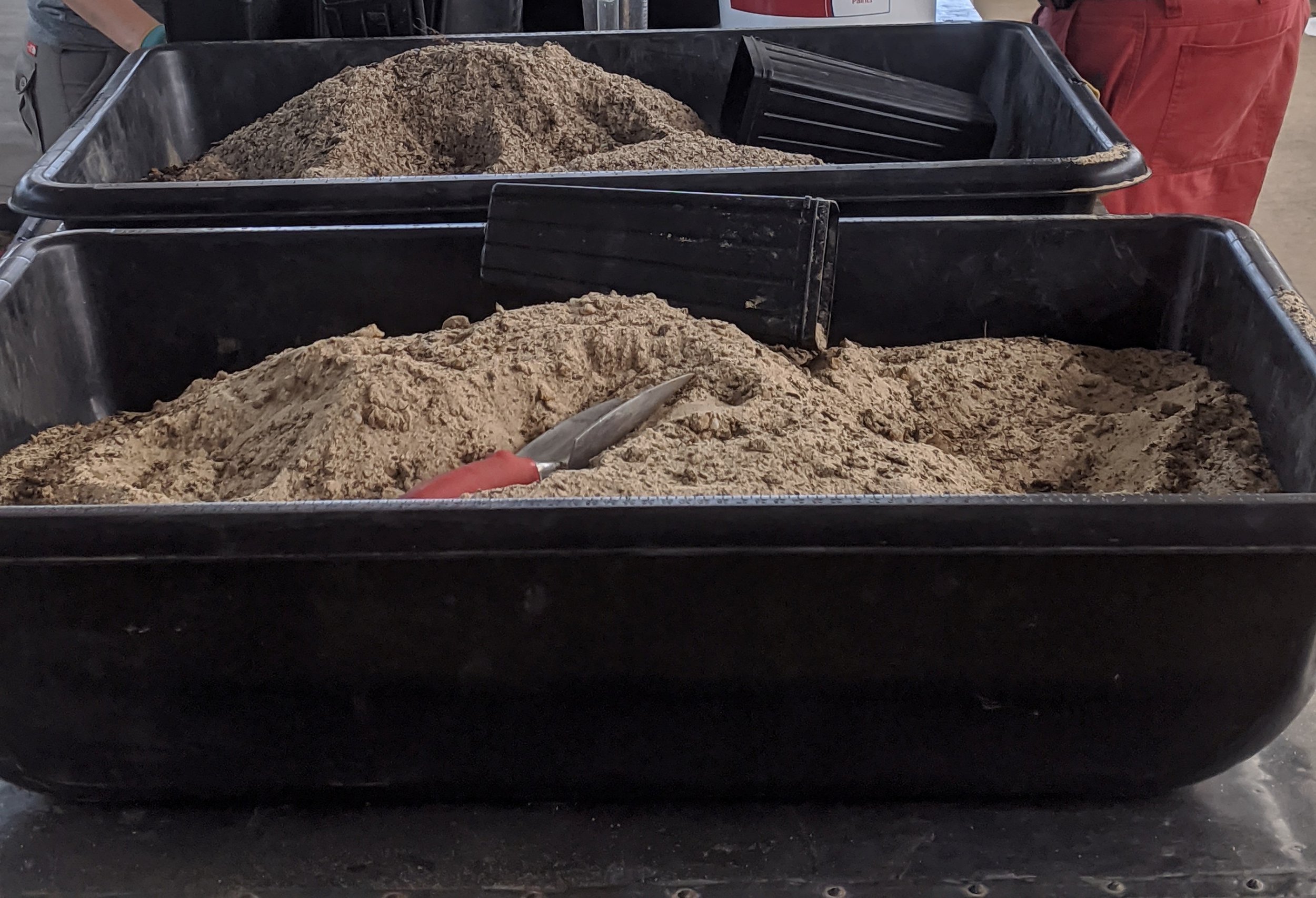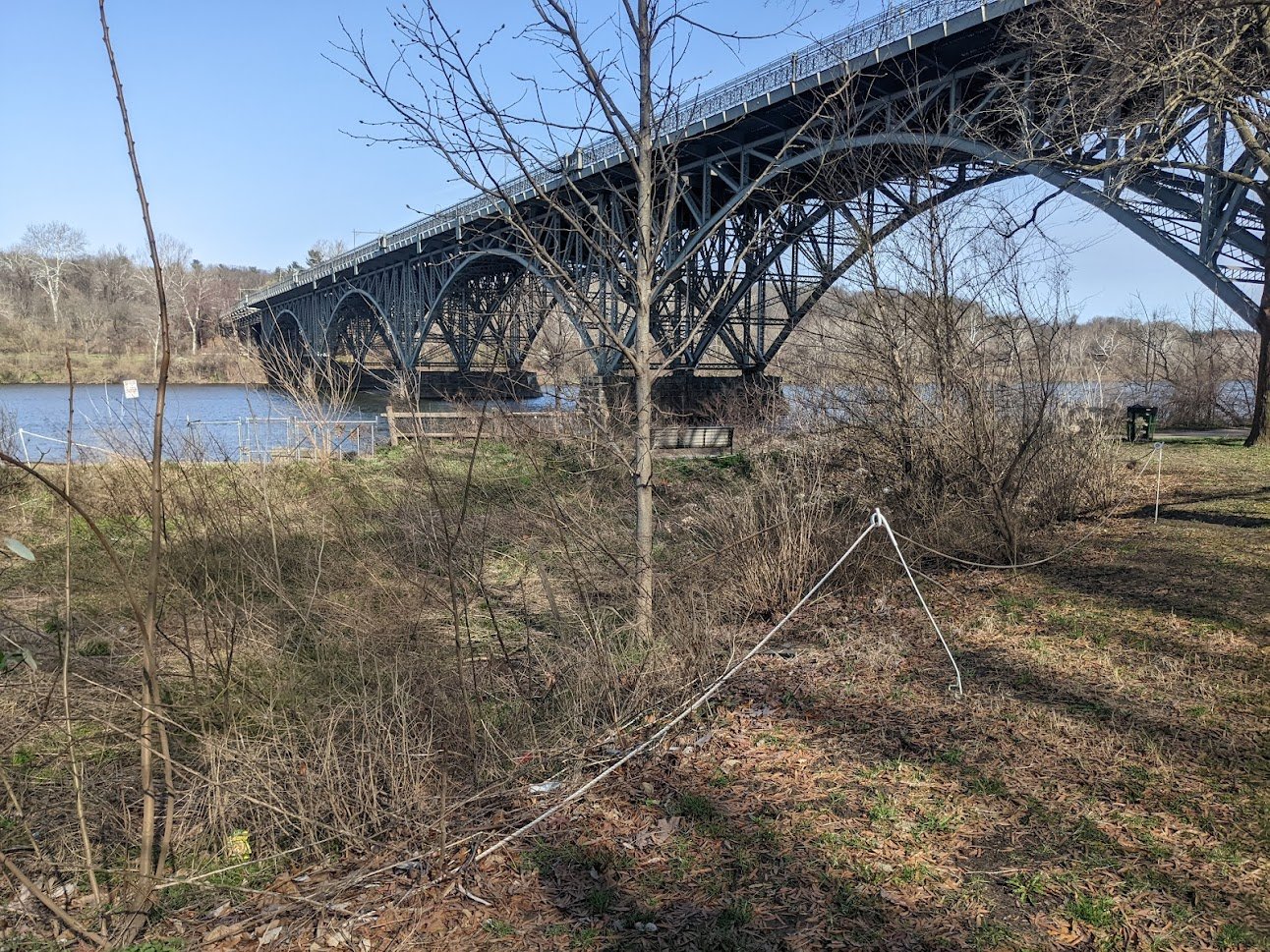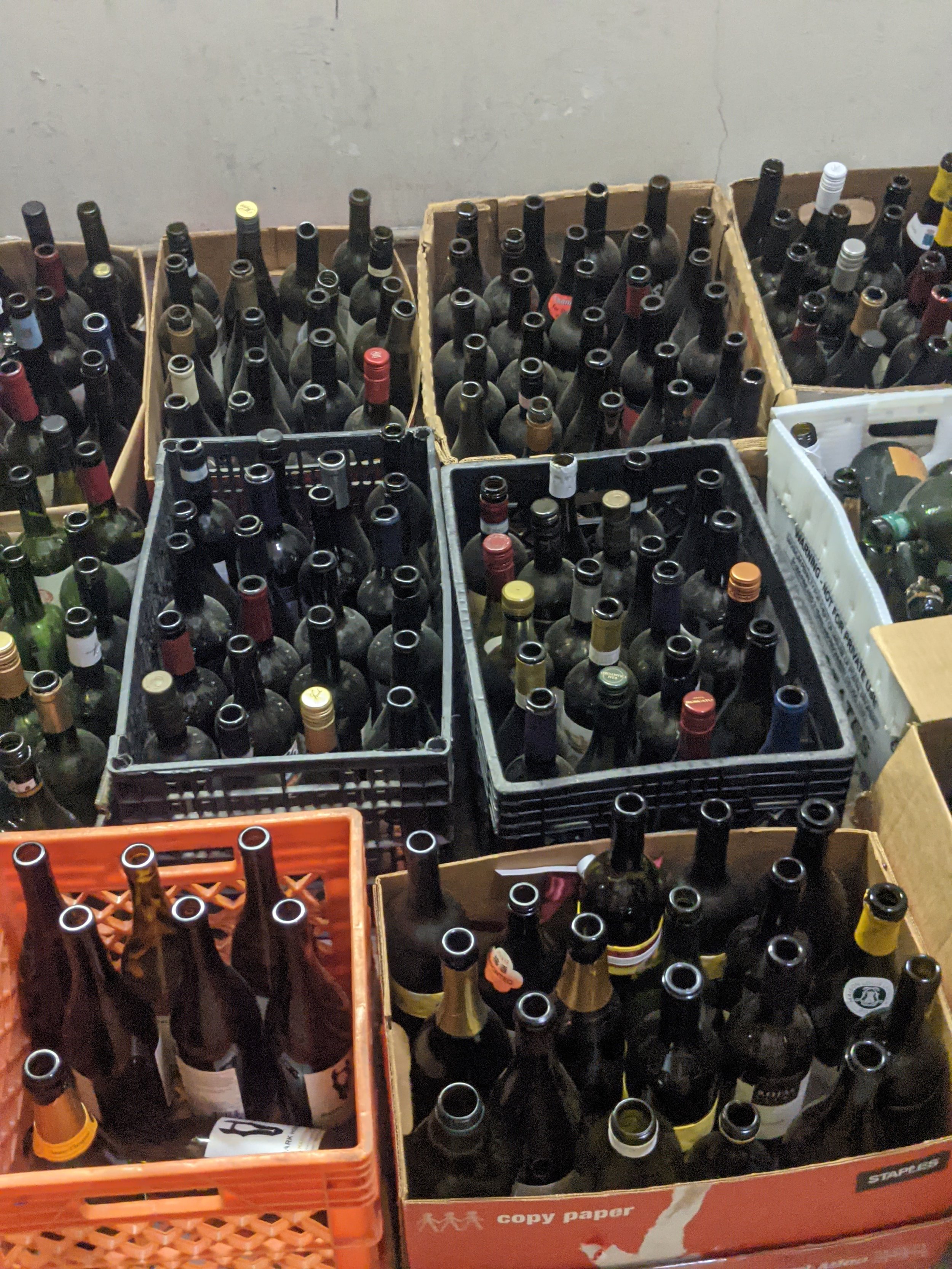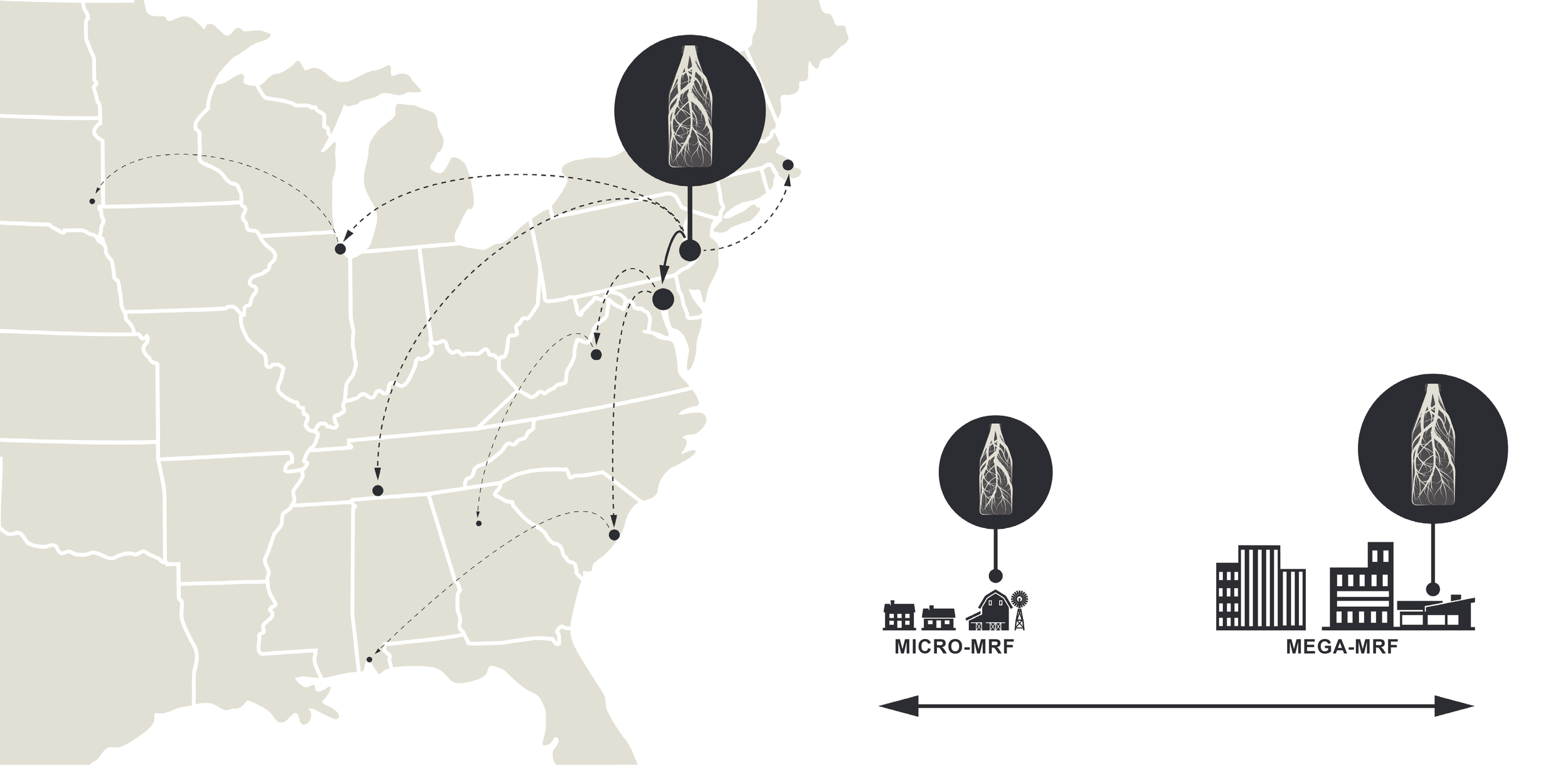Soilless Soil: 2020-2022 Recap!
The past two years have been busy for the Soilless Soil team! Read on for a quick update.
What have we learned?
With funding from the EPA and the William Penn Foundation, OLIN Labs and our collaborators have been able to pursue several lines of research on glass-based soil (GBS):
Water Quality and Infiltration
Together with scientists from Temple University, we performed a column mesocosm study to test our prototype GBS mix’s infiltration performance and leachate characteristics, critical to maintaining plant health and water quality in urban green stormwater infrastructure (GSI).
Infiltration
We found that glass-sand substantially slows the infiltration and movement of water through the soil profile compared to conventional sand-based soil. Given that sand-based soil can become quite dry during rain-free periods, slowing water a bit could help to sustain plants during such periods. However, soil with glass-sand only may drain too slowly relative to how fast GSI is required to drain (72 hours in Philadelphia). We are therefore testing mixes of glass-sand with natural mined sand to optimize infiltration rates.
Leachate
We found that the levels of metals, chloride, and sulfur leached from GBS were low enough to be released into the environment. The two metals we measured for which EPA has drinking water standards (copper and zinc) were below those limits. We also found that both the experimental GBS mix and the natural sand mix leached nitrate at levels above EPA’s limits, suggesting that the compost (e.g. leaves or food waste) included in any mix should be screened for nitrate levels before use.
Soil Properties
The GBS soil mixes proved to have high pH and sodium levels. We tested a variety of pH mitigation strategies (acidification, iron sulfate amendment, and sieving to remove fines) but found that their effects diminished with time, making them unlikely to be worth their lifecycle and economic costs. Consequently, we decided to optimize the pH and sodium levels of the GBS mix by combining it with an acidic natural soil and adjusting the ratios of the mix components.
Plant Growth Trials
Through two rounds of greenhouse trials, we tested how well several prototype GBS mixes supported the growth of plant species often found in Philadelphia’s green stormwater infrastructure. Based on our findings, we developed a GBS mix that performs about as well as traditional sand-based soils in a greenhouse setting. Now we’re ready to test our prototype in the field!
Economic Analysis & Technical Planning
The research team developed a technical planning package that illustrates how the City of Philadelphia could implement a public-private GBS manufacturing program, building on existing public-private partnerships and municipal waste management systems. This planning package studies glass-sand’s economic viability as an alternative to mined sand. It also addresses the scalability, in terms of production volume and cost, of GBS manufacturing.
What’s Next?
OLIN was one of only nine small businesses nationwide to be awarded two phases of research funding by the EPA’s Small Business Innovation and Research (SBIR) program.
With this funding for 2022-23, OLIN Labs and our collaborators are building on our prior work by addressing remaining technical questions and piloting a full-scale manufacturing and installation strategy.
Here’s what’s in the works:
Field Experiment
In collaboration with Philadelphia Parks and Recreation (PPR), the Soilless Soil research team is retrofitting a Fairmont Park stormwater bioretention basin damaged in Hurricane Ida. The bioretention basin will become a field site for testing the performance of GBS under real-world conditions. Monitoring the basin from Fall 2022 through Fall 2023 will expand our understanding of GBS’ effects on water flow and quality, as well as its suitability as a planting medium.
Pilot GBS Manufacturing Process
The research team and a variety of local material processing businesses are coordinating to begin the pilot production of the GBS prototype. In addition to providing GBS for the field experiment, this pilot production phase is intended to position local businesses to scale up GBS production in the future to support future municipal demand for the material. Central to this effort is the team’s work to support glass recycling nonprofit Bottle Underground in expanding their capacity to source and process waste glass into glass-sand suitable for use in GBS.
Technical Planning
Building from an expanded understanding of the constraints and opportunities of GBS production developed through the pilot GBS manufacturing process, the research team is updating and expanding our technical plan. Scaling up beyond Philadelphia, we’re planning to put together a roadmap document that other municipalities could use to begin manufacturing GBS themselves. By freely disseminating what we’re learning, we aim to encourage many more municipalities to recycle urban waste into green infrastructure.
Keep in Touch!
We’re preparing to install the pilot site bioretention basin in Fairmont Park in October 2022, so check back for updates!
To learn more about our project or collaborate with the Soilless Soil research team, please contact Rebecca Popowsky at rpopowsky@theolinstudio.com.

